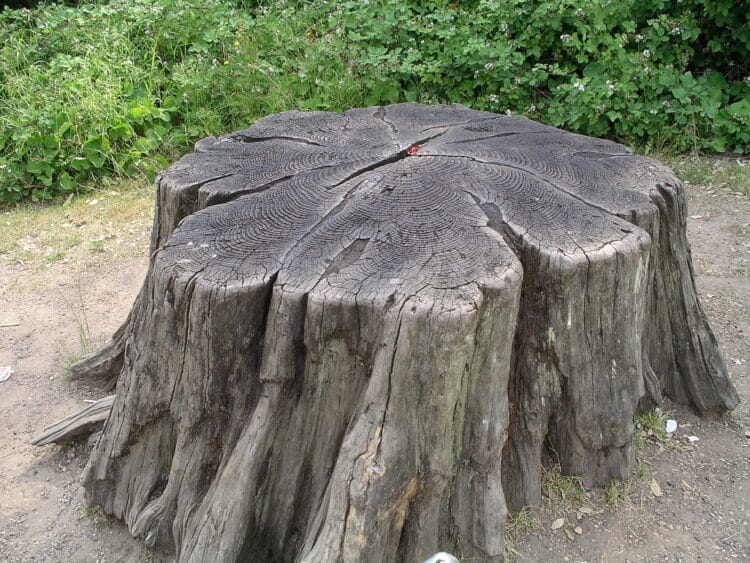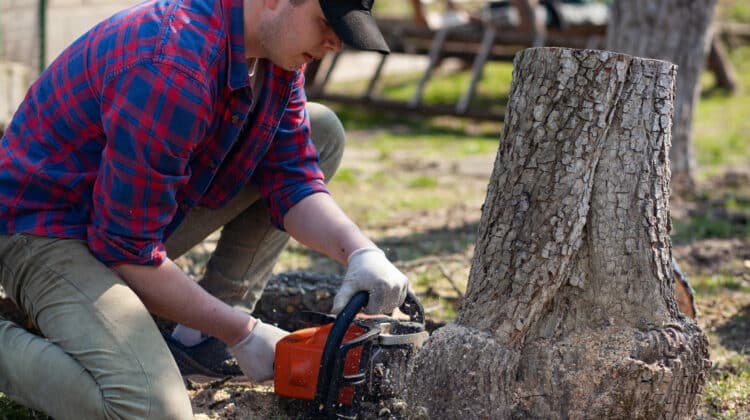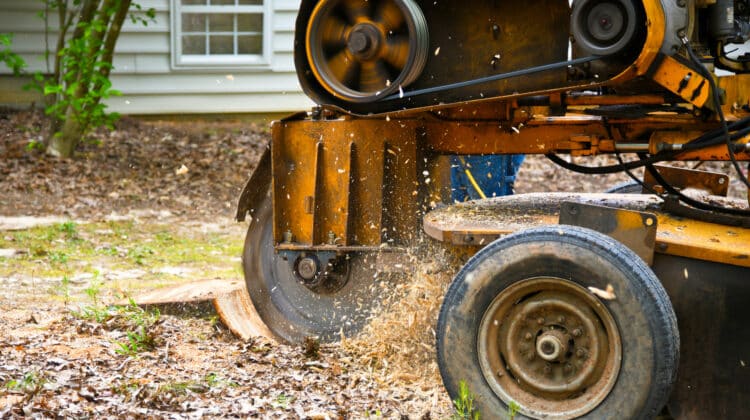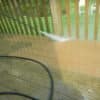
Tree stumps left behind after cutting down a tree can ruin the beauty of your property and cause injuries. If you like to get your hands dirty by doing most of the work yourself then this DIY is meant for you, there are several ways to remove the stump. You may hire a grinder, rot the stump using chemicals or cut it using home tools. Stay with me to learn how to remove stump with chainsaw.
If you are a property owner and wonder how to remove a tree stump without a grinder, you are in the right place. In this article, we talk to you who have a chainsaw at home or can buy one to remove a stump. We know removing tree stumps is a tiring process, but we hope to make the work more manageable with a chainsaw.
First of all, to remove a tree stump with a chainsaw requires you to have basic knowledge of chainsaw use. But if you are a beginner, you can start by following the instructions laid down in the chainsaw manual. You will also need protective wear to block flying debris and shield you from accidental cuts.
In addition, you will need some crucial tools to accompany the chainsaw to make the work much more manageable. These tools include a shovel, lever, trowel, chain, and mattock.
Table of Contents
How to remove stump with chainsaw
Before you get down into business you have to check on safety. Below are what you need for the job:
Step 1- Wear personal protective clothing
For the safe use of a chainsaw when removing stumps, wear protective gear to protect your eyes, ears, and limbs against possible injury. These protective equipment include:
- Helmet
- Goggles/Visor
- Ear Defenders
- Gloves
- Protective pants
- Boots
- Jacket
Step 2- Trim the stumps to the ground level
Most tree fellers leave a significantly tall tree stump after cutting the tree. A big stump, probably with side branches, remains. Cut off the branches, leaves, and zombie trees that may have sprouted from the decaying stump. Use alternating and diagonal cuts to slice the upper [part of the stump to the minimum height near the ground.
To ensure you cut as much stump from the ground as possible, first clear the surrounding dirt, leaves, or weed. This gives you a good view and removes obstacles that could cause kickbacks from the chainsaw.
Be careful to avoid cutting through the soil. Also, please do not cut the stump with the tip of the guide bar, lest it gets stuck and slows down the cutting process. Diagonally cutting the stump helps avoid trapping the guide bar and chain under the heavyweight of the tree stump. In addition, cut small chunks gradually that your chainsaw can handle.
After cutting the upper part of the stump, push the wood chunks away and proceed with the next step; clearing debris to expose the roots.
Step 3- Clear dirt away from the stump
Use a shovel or a trowel to remove the earth around the stump. The ground might be challenging, and you may spend some time at this stage. As you clear the dirt from the stump base, trace the root system to ensure you remove the soil to the farthest part.
Big tree stumps have longer roots that may spread several feet away from the base. Removing the soil and weed from the root network clears the view in readiness for cutting the roots and detaching the stump from the ground.
Pay attention as you dig deeper into the ground. Avoid damaging underground water pipes that might be lying near the stump. Damaging the waterways could cut off the water connection to your house. It could also affect your neighbors.
Step 4 – Cut the roots
After clearing the dirt around the dirt, take your chainsaw and work diagonally, detaching the roots from the ground. Start from the top of the stump. Work small sections by cutting diagonally and alternating the directions of the cut. You may need to change positions around the stump to alternate these cuts.
Be careful to avoid cutting into the ground, as this could make the chain blunt. The soil may also get into the machine’s parts and be the root of some common problems such as smoking or overheating.
Clear any extra dirt that collects as you work. However, don’t clear while the chainsaw is still running. Instead, turn off the chainsaw, then go ahead and clear the dirt. Use the trowel or shovel to shovel out any accumulated soil.
Also, take care when digging into the soil to avoid damaging water pipes. If not sure where the water pathways are, consult your local water technician to confirm the location of the lines. Consulting local technicians will save you from spending your money on repairing damaged underground water pipes.
Continue cutting the roots using the saw or an ax until the ground’s grip on the stump is loose.
Once you have cut most of the roots from the ground, it is time to pull out the stump.
Step 5- Detach the stump from the ground
Cutting the roots frees the stump from the ground’s tight grip. In this step, move the stump back and forth to loosen the roots before pulling it out. The ease of movement will inform you of any roots that are still deep into the ground.
You could also use a landscaping bar, crowbar, or digging bar to try and pull the stump. Place the lever between the soil and the stump. Put a stone or a log below the lever such that when you pull down the lever, it will lie on the stone/log. Pull the lever downwards and exert pressure on the stump to free the rots from the ground.
The bars can act as levers to exert more force than your hands and make prying the stump easier. If the stump is too broad, get help from someone to pull it out.
If the stump is still hard to pull after all this, wrap a chain around the stump. Fix the other end of the chain on a tractor or pick-up truck. Try to loosen the tree trunk by pulling the chain forward. Pull again in the opposite direction until you pull out the stump.
Step 6- Get rid of the tree stump
So, after all these steps, your tree stump is free from the ground and is lying there. What next after uprooting the stump? Well, for one, consider cutting the stump into sizable portions to create firewood for the fireplace.
You could also check if there is a stump disposal service in your neighborhood. Most local parks help members of the community to get rid of tree stumps.
Another option you should consider is selling the stump to a local recycling company. Ask a family member or a neighbor for a hand to lift the stump to your car or truck. You could then take the stump to the recycling point. In addition, some local businesses buy tree stumps to sell to their customers as firewood or process them to make wood products.
You can also hire a wood shredder to shred the wood. Use the shredded product as mulch to lay on your garden and form a base for your seedbed. Mulch decays to create nutrient-rich manure that helps seedlings and vegetables grow.
Grinding a tree stump with a chainsaw
The above process involves cutting the stump and its roots from the ground then uprooting it. There is another method of getting rid of that ugly stump in your property. The technique is similar to a grinder, only that you are using a chainsaw to grind the stump.
How to do the chainsaw stump grinder technique
- Clear dirt around the stump to expose it and give you a good view. Use an ax to remove the bark of the stump if it is not yet decayed
- Use diagonal, alternating movements to slice most parts of the stump. You could cut the stump to about one or two inches above the ground
- Position the cutting edge of your chainsaw on the flat surface of the stump. Make one inch or two inch-deep vertical cuts into the stump
- Turn around and make crisscrossing patterns of the same depth, to make a right angle with the vertical cuts. This pattern assumes a grid’s appearance
- Fine woodcuts will start to fall off and can be swept away by water. Use a hose pipe with water or a pressure blower to clear the pieces of wood from the surface
- Repeat the same procedure, taking care to not cut into the dirt with the chainsaw
- Once done, pour some dirt over the space and plant some seeds. Add some mulch and sprinkle some water to set the layer of soil. This prevents the wind from blowing it away and exposing the stump roots
The only downside to using this method to get rid of stumps is that the roots are left on the ground and may take a long to decay. Some types of tree stumps may germinate into zombie trees. These trees will make your landscape clearing effort fruitless.
In addition, grinding stumps with a chainsaw increases the chances of cutting into dirt or trapping the guide bar into the wood. When the guide bar gets stuck in the wood, it is likely to bend or get damaged. This method is recommended for chainsaw veterans who have mastered how to change angles when cutting through wood.
Valuable tips on how to remove a tree stump using a chainsaw
Tree stumps can be hectic to remove at times. Below are some of the easy techniques that can help you overcome the hazards:
Use a high-pressure hose pipe
The high-pressure washer will clear dirt from the tree stump base and around the exposed roots. The high-pressure water will dislodge the dirt from the roots bringing a clear view of where the chainsaw is cutting.
It is unnecessary to remove all the roots
Provided you have dislocated and cut the primary roots holding the stump into the soil, you can start pulling the stump. Some roots may be deep and spread to the broader area of the yard. Digging them out may ruin your yard.
Use a vehicle or tractor to pull the tree stump
Sometimes, even after cutting the main roots holding down the stump, it won’t move when pulled with bare hands. Wrapping a chain around the stump and drawing with a truck or tractor could make your work easier.
Remove stumps after the rains
When it rains, the ground absorbs water making the soil soft. Clearing the dirt to make way for the chainsaw becomes easier. It is also advisable to remove stumps during winter.
Avoid cutting into the dirt
When cutting the roots, ensure you cut diagonally and avoid cutting into the ground. The soil blunts the chainsaw and hastens the wear on the chain joints. Cutting into the dirt also stretches the chain, making it hang loosely on the blade.
Which is the best chainsaw chain for cutting stumps?
There are four types of chains used in chainsaws. Their suitability varies with the kind of stuff you are cutting. These are full chisel, semi-chisel, micro chisel, and low profile chains.
The most suitable chain for use in cutting tree stumps is the semi-chisel. It has rounded edges that slow down the cutting speed, consequently lowering the kickback rate. The chain is also more resistant to diet-induced dulling. This makes it suitable for cutting tree roots.
Why should I remove tree stumps from my yard?
So you have been looking at the tree stump lying in your yard, thinking if you should keep it or remove it. It would be best if you got rid of it, and here is why:
Tree stumps are unpleasant to look at
Have you seen a good-looking stump in your yard or your neighbor’s? Most tree stumps aren’t a sight to behold unless you make creative artwork from them.
When you cut a tree, the beautiful leaves, flowers, and branches full of life are gone. A life-less and ugly stump that only acts as an obstacle to maximizing your yard space sits in the area now.
Stumps pose a safety hazard
Stumps present a safety hazard to you and your family. For instance, as you mow your yard to keep the grass neat and presentable, the lawnmower might hit a stump and injure you. The stump will also damage the mower and cost you more money at the repair shop.
Besides, children playing in the yard may trip over the tree stumps and sustain serious injuries. Big tree stumps also spread their roots far into the yard and may puncture your vehicle tires as you drive by.
Stumps are breeding places for insects and rodents
Tree stumps decay very slowly. It could take years until the wood rots completely. As the tree stump rots, different creatures build their habitat around and inside the wood. These insects and rodents can be a nuisance to you.
Some of these creatures can even cause economic losses. For instance, termites can eat your wooden materials such as furniture and housing structures. Rodents, on the other hand, can destroy stored farm produce and ruin clothes.
Zombie trees sprout from the tree stumps
After cutting the tree, some tree stumps do not dry up. Instead, new trees sprout from the stump and grow into unpleasant trees with stunted growth. These trees are known as zombie trees.
Zombie trees do not add any value to your yard. They also compete for nutrients with other economically significant vegetation in the yard—for example, vegetables in the kitchen garden.
The little trees can also reduce the value of your property to prospective buyers.
Tree stumps reduce yard space
Some tree stumps are so big that they take up space that you could use for other purposes. For instance, you could use the area to construct barbecue grills, a children’s playground, or a workshop.
If you are a gardening enthusiast, you probably have divided your yard into sections for the different vegetables you grow. Having tree stumps amongst these vegetables is wasteful.
The stumps take up space you could use for more produce. The tree stump roots could also compete for nutrients with your plants and cause poor crops.
Stumps complicate Yard activities
Gardening, landscaping, weeding, or any other yard activities need clear pathways and space. Tree stumps will create obstacles. These barriers make chores around the yard harder. Stumps also interfere with playing space and experience for your children.
What Next after removing the tree stump?
After removing the tree stump, what remains is another unpleasant look on your yard; the hole where the stump sat. If you leave it that way, your stump removal activities to beautify your landscape could be in vain.
To finish the good work you started, fill the hollow space with good quality loam soil to grow lawn grass or other plants. You can dig the dirt from another part of your yard. Work the ground and level it. Plant some grass seeds, cover them with a light layer of soil, and top it up with mulch.
The mulch serves as a shield to keep seed-picking birds away. The mulch also acts as a barrier against strong winds that might blow the seeds and the soil away.
Water your new mini-garden and wait for some weeks for the grass to grow. The water also makes the soil moist and sticky, reducing the chances of being blown away by the wind. After the ground is level with the rest of the yard, you may choose to use the site as you wish.
Other ways to remove tree stumps without a grinder
Use stump killing chemicals
It will take you about six to eight weeks to get rid of a tree stump using the chemical method. This method will need a chainsaw, a drill, and a suitable stump remover chemical.
You will also need to dress up in protective clothing such as goggles and earbuds for the chainsaw stage.
How to remove a tree stump with a stump killing chemical
- Cut most of the tree stump with the chainsaw, only leaving few inches above the ground
- Use the drill to make horizontal and vertical holes across the surface of the stump. Drill these holes so that the vertical holes meet the horizontal holes to make a channel
- Pour the chemical into the holes (the substances are in the form of a powder)
- Add water into these holes to soak and activate the chemical
- Wait for about six weeks for the chemical to soften the wood
- Once the wood feels soft and mushy, cut the wood into pieces with an ax and dispose of them
Some of these chemicals are harsh. You can use milder chemicals such as nitrogen-based chemicals and Epsom salt.
Examples of chemicals used as tree stump killers:
- Potassium nitrate
- Epsom salt
- Spectracide
- Bonide
- Bleach
Burning the Stump
You can also burn the stump in a controlled manner to break down the wood pulp into ash. This method produces smoke which could be an air pollution concern. Please consult your local authorities to find out this is legal.
How to burn a tree stump as a removal technique
- Cut most of the tree stump with a chainsaw
- Drill holes of about 10-inch depth into the stump. These holes should be close to each other, leaving only a tiny gap between them
- Fill these holes with a nitrogenous chemical such as potassium nitrate
- Add hot water to the chemical to activate
- Place dry wood on the stump in an organized way and light it up. Let it ignite the stump as you watch to keep the fire to spread to flammable neighboring materials
- Once most of the stump has burned down, dig up any remaining roots with a shovel and dispose of the debris
- Fill the hollow space left behind by the burnt stump with soil
Conclusion
Tree stumps are ugly and reduce the value of your property. They also house household and garden pests such as termites and insects—these creatures damage stuff around the house. Stumps create obstacles that interfere with children’s play routine and cause injury.
Learning how to remove these stumps is essential to any homeowner. Using a chainsaw to cut tree roots is a DIY technique for removing a stump without a grinder. Other ways include burning and treating the stump with a chemical to speed up the rotting process.





